It’s a challenging but worthwhile task to estimate the costs of construction a new home. Building a house gives many people the unmatched satisfaction of creating a place that is specifically tailored to their requirements. However, this enthusiasm is accompanied by the urgent need of careful financial preparation. The cost of building a home may vary greatly depending on a number of factors, including local labor rates and material prices.
Getting a rough idea of your construction expenses is just one aspect of accurately predicting them; another is knowing where your money will go and how to maximize every dollar. Estimating the price of constructing a new house may be an empowering first step in the process if you have a well-thought-out strategy.
Knowing the Fundamentals of Home Building Costs
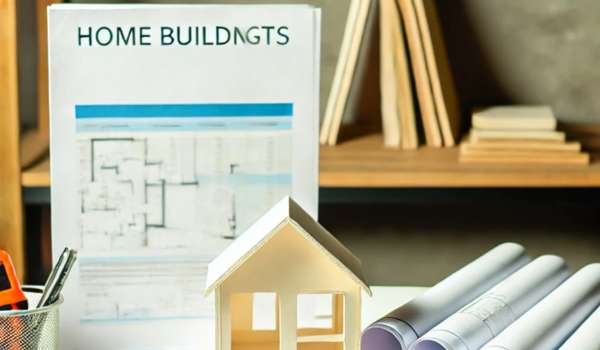
The three main components of home building expenses are typically materials, labor, and permits. Although the expenses of each property may differ, knowing the fundamentals of each area can help you begin making reliable estimates. The greatest portion of overall expenses is attributed to materials and finishes, which include everything from countertops to timber.
The second significant expenditure is labor, which is determined by local pay rates and contractor demand. Even though they are often less expensive, permits and fees are essential to budget for since they provide your project credibility and regulatory compliance.
Important Elements That Affect Building Costs
The ultimate cost of constructing a home is influenced by a number of important elements, according to Estimate Costs Construction Home. Prices for labor and materials are directly impacted by market circumstances, which are influenced by local demand, global commerce, and resource availability. Your design’s intricacy also matters; simpler designs are often less expensive, but specific floor plans or distinctive architectural elements raise prices.
Seasonal scheduling may also have an impact on costs; for instance, constructing during periods of strong demand for construction may result in higher labor costs.
The Significance of Location in Cost Estimation
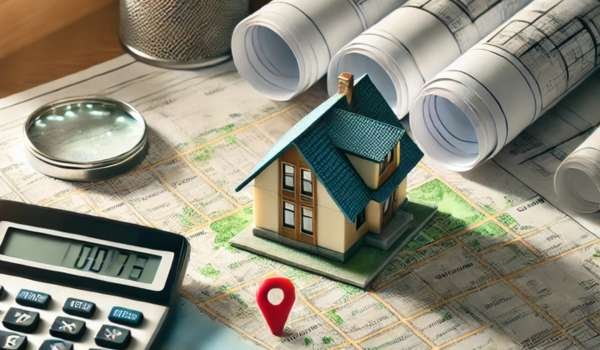
When calculating building expenses, location is crucial. The kinds of materials chosen and the required structural reinforcements may be influenced by local construction rules and weather, while labor costs are influenced by the cost of living in the area. Land prices and labor rates are often higher in urban areas than in rural ones.
Additionally, the cost of material transportation will vary based on how close suppliers are. You may significantly affect your budget by selecting a place with a more favorable cost environment.
Preparation and Land Costs: What to Anticipate
The land must be prepared before the building can start. Depending on variables including soil type, land slope, and existing plants, costs might vary greatly. The costs of digging, leveling the land, and clearing trees might vary from little to large.
In order to guarantee a solid foundation, some land parcels would also need retaining walls or grading, which would increase the original expenditure. Being aware of these variables beforehand may help prevent unforeseen costs.
Comprehending Local Permits and Fees
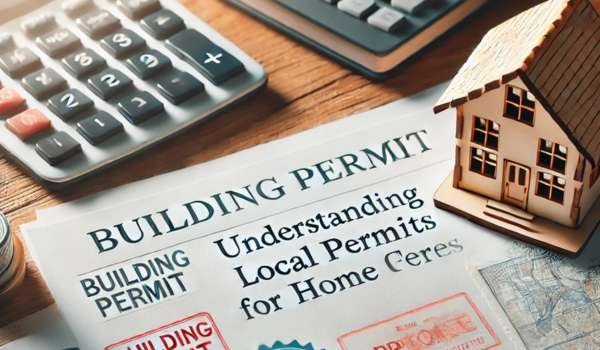
Permits are necessary for all new building projects, and the cost varies greatly depending on the location and level of intricacy. Permits for electrical, plumbing, and construction projects are common. Costs may increase if some municipalities additionally want environmental evaluations.
To prevent construction delays and guarantee adherence to local building codes, it is essential to investigate and include permit costs in your budget early on. For a fee, some areas provide expedited permit processing, which can be something to think about if time is of the essence.
Dissecting the Main Types of Construction Expenses
It is useful to divide building expenditures into main groups for budgetary clarity. With this method, you can see how much each component of the house—foundation, framing, plumbing, and finishes—will probably cost and where you may be able to save money. A well-organized budget gives you a spending roadmap so you can make prudent resource allocations all along the way.
Excavation and Foundation: Establishing the Framework
The foundation, which takes up a significant amount of the budget, is the actual and monetary cornerstone of your house. Depending on the kind of foundation, prices might range from a straightforward concrete slab to a more intricate crawl space or basement foundation.
The cost of excavation will also depend on the state of the ground; personnel and specialized equipment are needed for rockier or uneven terrain.
Costs of Framing: Constructing the Structure
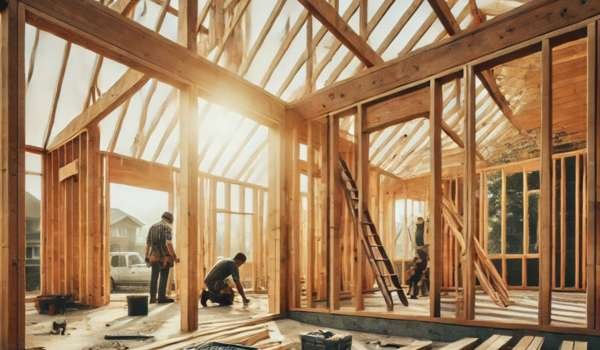
The foundation of the house, framing, sometimes takes up a significant portion of the money. The ultimate price tag includes labor, steel, and lumber prices. The size and complexity of the design also affect framing prices; a bigger or more complicated floor plan will need more materials and expert work. Using prefabricated frame components may save money without compromising structural soundness.
Exterior Finishes and Roofing: Safeguarding Your House
From low-cost asphalt shingles to high-end choices like slate or metal roofing, roofing materials come in a vast variety. Each kind has unique durability and cosmetic characteristics that affect both the original investment and ongoing upkeep costs. Siding, brick, and stucco are examples of exterior treatments that vary in cost and installation complexity. You can make sure your investment lasts by selecting sturdy materials that suit your local environment and budget.
Drywall and Insulation: Getting Comfort Ready

Drywall and insulation are essential components of a cozy and energy-efficient house. Though it can cost more upfront, higher-quality insulation can save heating and cooling expenses. The size footage and intricacy of the area determine the cost of drywall; multi-story houses and designs with vaulted ceilings may result in higher expenses. Utility expenditures may be reduced in the future by carefully choosing drywall and insulation for optimal effectiveness.
Electrical and Plumbing Systems: Necessary Services
Any home’s lifelines are its electrical and plumbing systems, which are necessary but sometimes expensive building components. The size of the house and the quality of the fixtures used will determine how extensive these systems are. Electrical expenditures may increase with the addition of features like more outlets or a home automation system.
The number of bathrooms and kitchens, as well as any unique features like a water softener or filtration system, have an impact on plumbing complexity.
HVAC systems include air conditioning, ventilation, and heating.

HVAC systems are essential for preserving interior comfort. It will depend on the home’s size, the local temperature, and system efficiency. Despite being environmentally benign, geothermal or solar heating systems may be rather expensive upfront. High-efficiency systems, however, would be a worthwhile investment since they might reduce running costs and perhaps increase the home’s value.
Interior Finishes: Countertops, Cabinets, and Flooring
The area is made unique by the interior finishes, and the price range is wide. Each flooring choice has different installation prices and durability, ranging from exquisite hardwood to reasonably priced laminate. Countertops and cabinets also differ, with stone countertops and bespoke cabinetry being more expensive.
Investigating substitute materials that resemble more expensive ones may provide cost-effective solutions without compromising design.
Driveways and landscaping are examples of exterior finishes
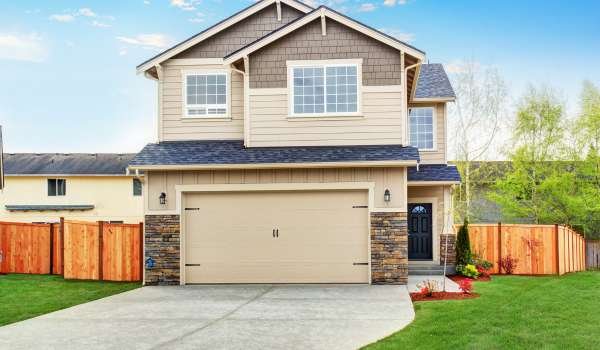
Installing a driveway and landscaping are sometimes the last tasks, but they are expensive. The possibilities are almost endless, ranging from simple gravel and sod pathways to intricate gardens and paver roads. In addition to improving curb appeal, a well-designed landscape may aid in erosion prevention and drainage, strengthening the home’s overall structural stability.
The price of fixtures and appliances
Appliances and fixtures are crucial finishing touches, from fashionable light fixtures to energy-efficient freezers. Although some builders provide appliance bundles, choosing and buying them separately might save you money.
Fixtures, which vary in price according to brand and style, also provide character and usefulness. Budgeting for these things guarantees that you may give priority to necessities while still making space for special selections.
Comparing Labor and Material Costs to Balance Your Budget
Although labor and material expenses often account for the majority of the budget, it is important to balance them. While some homeowners value skilled labor to guarantee superior construction, others may decide to spend more on materials and pick luxury finishes.
Achieving the optimal balance between cost, quality, and efficiency may be facilitated by understanding where to devote money.
How to Budget for Unexpected Building Expenses

The process of building a house is complex, and unforeseen expenses are unavoidable. Having a contingency reserve in place may help reduce financial stress from little setbacks like material delays to large ones like structural changes. A sensible way to avoid budget overruns is to set aside at least 10–15% of your overall budget for unanticipated costs.
Understanding Cost Agreements When Dealing with Contractors
A successful project in Estimate Costs Construction Home depends on choosing a reliable contractor. Different sorts of agreements are offered by contractors; some have set rates, while others work on a cost-plus basis. Clear payment arrangements and a grasp of these terms assist avoid misunderstandings and guarantee that the project remains under budget.
Comparing Professional and Do-It-Yourself Prices for Various Tasks
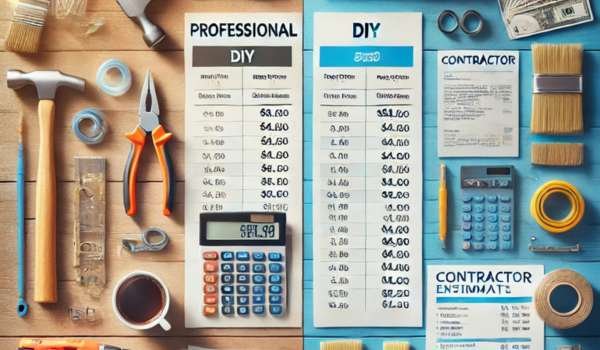
Although do-it-yourself projects might reduce labor costs, it’s crucial to balance the possible savings against the benefits of expert knowledge. Simple gardening or painting projects may be doable, but more complicated chores like plumbing or electrical work are better left to the experts. Your budget may be maximized by choosing which jobs to outsource and which to do yourself.
Hidden Expenses to Be Aware of
Even the best-prepared homeowner may be surprised by hidden expenses, such as homeowner’s association dues or utility connections. Even though they are often little costs, they may mount up rapidly. Early budgeting for ancillary expenses might help you avoid unforeseen financial hardship as your project draws to a close.
Advice for Managing Construction Costs and Creating a Budget
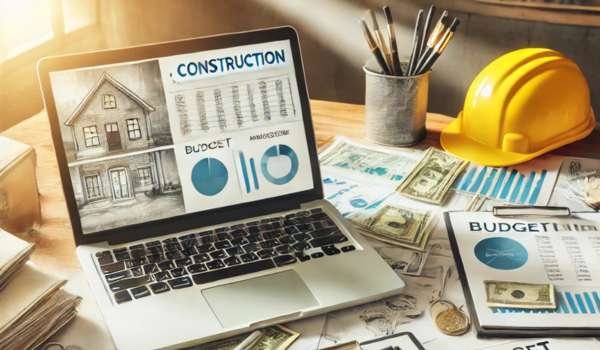
Organization and care are necessary for effective budgeting. Staying within financial constraints is facilitated by developing a thorough budget, monitoring spending on a regular basis, and making adjustments as needed. You may keep within your original cost estimates by giving priority to the most important components and avoiding expensive upgrades until absolutely required.
Learn More : When Is Down Payment Due For New Construction Home
Conclusion
For many individuals financing a new house, obtaining a construction loan is crucial, according to Construction home Estimate Costs. Construction loans are short-term loans created especially to pay for building costs, as opposed to traditional mortgages. They sometimes have special conditions, such as frequent inspections at different phases of development to disburse cash, and higher interest rates.
In order to keep the project under budget, these loans usually provide periodic payments that correspond with significant construction milestones.
